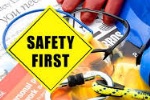November 5th is looming and with it the usual reminders to fireworks away from heat sources, keep children at a safe distance, lock up your pets and don’t return to a firework once lit. Commonsense stuff of course, but the statistics show that despite plenty of guidance every year about 1000 people are injured in firework related accidents, about half of them children.
In the course of writing this blog I discovered some interesting statistics about November 5th which I can’t resist sharing with you.
- Until 1959 it was illegal NOT to celebrate Bonfire Night
- Fireworks can travel at speeds of up to 150 miles an hour.
- The word “bonfire” was originally “banefyre”, a large open-air fire on which bones were burnt.
- Fireworks originated in China during the Han Dynasty (206-220 BC) when bamboo roots were thrown on fires, creating air pockets that exploded. They were used to scare away evil spirits.
- You can be fined £5,000 if you’re caught throwing a firework.
- If three sparklers burn together, they will emit the same heat as a blowtorch used to join metal.
(source: http://bonfire-night-safety.co.uk/)

Living and working safely isn’t confined to November 5th. This year we’ve had a real crack at our H&S paperwork. The office is low risk, we’ve done the risk assessment and put processes and system in place to make sure we could work safely. The paperwork was a bit patchy but over the last few months we’ve worked hard to get it all shipshape and think we’re there. The next thing was to make sure the team are reasonably well acquainted with the contents of the H&S folder.
I know of few people who leap with glee at the prospect of reading H&S stuff or having H&S training, important and essential though it is. So when I did some fire training with the team in early October I told them that at the end of October we would have a H&S quiz based on our office processes (with the additional bribe of prizes).
The end of October saw the team with their noses deep in our H&S manual preparing for our quiz. Although I made it an anonymised pen and paper test which were marked by other colleagues (so they couldn’t sneakily check online and there was no embarrassment if the score was lower than expected),I knew who had filled out which paper and who was marking whose. It was fairly light hearted and our winner was delighted with her box of chocolates.
We will be running these quizzes about twice a year just to keep key elements fresh in the team’s mind. If you’re interested in doing something like this, here’s the quiz.
Health & Safety Quiz October 2016
- In safety terms, what is a hazard? What is a risk? Define both.
- Describe two types of fire extinguisher in our workplace.
- Describe the general principles of using a fire extinguisher
- Where is our assembly point in the event of fire?
- If you discover a fire what three steps should you take and in what order?
- What must you do if a visitor has an accident (but not necessarily an injury)
- What steps must you take if a visitor sustains a minor injury or becomes unwell while at our premises?
- Where is our first aid kit stored?
- How often must the first aid box be checked?
- What first aid steps should you take if you burn yourself with boiling water?
- How often should have a break from using a VDU?
- What does “COSHH?” mean?
- What duties does COSHH place on the company? What duties do employees have in relation to COSHH?
- If it snows and you are unable to get to work what must you do?
- If you go out to see a client by yourself what steps must you take to look after your safety
- Describe the correct principles of manual handling
- What safety steps must the company take if an employee is pregnant?
- What does “RIDDOR” mean?
- When must an accident be reported under the RIDDOR requirements?
- What is the process for reporting a RIDDOR accident?
- When you are using a standing desk list three things you should consider doing/not doing from a safety point of view.
- What hygiene rules do we have for keeping our personal work space clean?
- If you are working at home what must the company consider in the risk assessment?
- List three things you should do to avoid slip or trip accidents in the office.
We deal with the good, the bad and the ugly of HR. If you need help managing safety or any other HR issues, give us a call on 01908 262628.
Signed up for our free resources and free weekly tip yet? Register and subscribe here.
Russell HR Consulting provides expert knowledge in HR solutions, employment law training and HR tools and resources to businesses across the UK.
Subscribe to our free monthly HR newsletter. Russell HR Consulting employment law newsletters are emailed automatically to our ever-growing number of subscribers every month.
Latest blog posts
- Is There a Santa Clause?
06 / 12 / 2023
- Lend Us a Hand!
22 / 11 / 2023
- What Happens When There is a Clash in Protected Characteristics?
17 / 10 / 2023
- Encouraging a Healthy Workforce 2
21 / 09 / 2023
- Encouraging a Healthy Workforce
23 / 08 / 2023
- What a Disaster - (But We Have a Cunning Plan!)
20 / 07 / 2023
- It’s Time We Stiffened the Sinews
14 / 06 / 2023
- Why Is It So Important to Develop Emotional Resilience?
16 / 05 / 2023
- When is a discretionary bonus not discretionary?
20 / 04 / 2023
- Recovering Training Costs 15 / 03 / 2023
